Optimized Variational Mode Decomposition and Convolutional Block Attention Module-Enhanced Hybrid Network for Bearing Fault Diagnosis
Abstract
1. Introduction
2. Theoretical Foundation
2.1. Optimizing the VMD Algorithm
2.2. Convolutional Neural Network (CNN)
2.3. Bidirectional Long Short-Term Memory Network (BiLSTM)
2.4. CBAM Convolutional Block Attention Module
3. Diagnostic Models
- (1)
- Acquisition of vibration signals from bearings under varying operational conditions;
- (2)
- Feature extraction through Variational Mode Decomposition (VMD) applied to raw signals to mitigate noise interference;
- (3)
- Division of processed data into training and testing subsets with a 70–30% allocation ratio;
- (4)
- Development of the trained model using the CNN-BiLSTM-CBAM architecture on the training dataset;
- (5)
- Implementation of diagnostic evaluation by introducing the test set into the trained model to generate final classification outcomes.

4. Experimental Case Analysis
4.1. Experimental Data
4.1.1. Introduction to CWRU Experimental Datasets
4.1.2. Introduction to the Experimental Dataset of JNU
4.2. Analysis of Ablation Experiment Results
4.2.1. CWRU Dataset Ablation Experiments
4.2.2. JNU Dataset Ablation Experiment
4.3. Self-Constructed Data Validation
5. Conclusions
Author Contributions
Funding
Data Availability Statement
Conflicts of Interest
References
- Hoang, D.T.; Kang, H.J. A Survey on Deep Learning Based Bearing Fault Diagnosis. Neurocomputing 2019, 335, 327–335. [Google Scholar] [CrossRef]
- Rai, A.; Upadhyay, S.H. A Review on Signal Processing Techniques Utilized in the Fault Diagnosis of Rolling Element Bearings. Tribol. Int. 2016, 96, 289–306. [Google Scholar] [CrossRef]
- Abid, A.; Khan, M.T.; Iqbal, J. A Review on Fault Detection and Diagnosis Techniques: Basics and Beyond. Artif. Intell. Rev. 2021, 54, 3639–3664. [Google Scholar] [CrossRef]
- Karnavas, Y.L.; Plakias, S.; Chasiotis, I.D. Extracting Spatially Global and Local Attentive Features for Rolling Bearing Fault Diagnosis in Electrical Machines Using Attention Stream Networks. IET Electr. Power Appl. 2021, 15, 903–915. [Google Scholar] [CrossRef]
- Borré, A.; Seman, L.O.; Camponogara, E.; Stefenon, S.F.; Mariani, V.C.; Coelho, L.D.S. Machine Fault Detection Using a Hybrid CNN-LSTM Attention-Based Model. Sensors 2023, 23, 4512. [Google Scholar] [CrossRef]
- Keshun, Y.; Puzhou, W.; Yingkui, G. Towards Efficient and Interpretative Rolling Bearing Fault Diagnosis via Quadratic Neural Network with Bi-LSTM. IEEE Internet Things J. 2024, 11, 23002–23019. [Google Scholar] [CrossRef]
- Huang, T.; Zhang, Q.; Tang, X.; Zhao, S.; Lu, X. A Novel Fault Diagnosis Method Based on CNN and LSTM and Its Application in Fault Diagnosis for Complex Systems. Artif. Intell. Rev. 2022, 55, 1289–1315. [Google Scholar] [CrossRef]
- Dao, F.; Zeng, Y.; Qian, J. Fault Diagnosis of Hydro-Turbine via the Incorporation of Bayesian Algorithm Optimized CNN-LSTM Neural Network. Energy 2024, 290, 130326. [Google Scholar] [CrossRef]
- Song, B.; Liu, Y.; Fang, J.; Liu, W.; Zhong, M.; Liu, X. An Optimized CNN-BiLSTM Network for Bearing Fault Diagnosis Under Multiple Working Conditions with Limited Training Samples. Neurocomputing 2024, 574, 127284. [Google Scholar] [CrossRef]
- Xu, Z.; Mei, X.; Wang, X.; Yue, M.; Jin, J.; Yang, Y.; Li, C. Fault Diagnosis of Wind Turbine Bearing Using a Multi-Scale Convolutional Neural Network with Bidirectional Long Short Term Memory and Weighted Majority Voting for Multi-Sensors. Renew. Energy 2022, 182, 615–626. [Google Scholar] [CrossRef]
- Dong, Z.; Zhao, D.; Cui, L. An Intelligent Bearing Fault Diagnosis Framework: One-Dimensional Improved Self-Attention-Enhanced CNN and Empirical Wavelet Transform. Nonlinear Dyn. 2024, 112, 6439–6459. [Google Scholar] [CrossRef]
- Xue, Y.; Dou, D.; Yang, J. Multi-Fault Diagnosis of Rotating Machinery Based on Deep Convolution Neural Network and Support Vector Machine. Measurement 2020, 156, 107571. [Google Scholar] [CrossRef]
- Yue, Y.; Cao, L.; Lu, D.; Hu, Z.; Xu, M.; Wang, S.; Li, B.; Ding, H. Review and empirical analysis of sparrow search algorithm. Artif. Intell. Rev. 2023, 56, 10867–10919. [Google Scholar] [CrossRef]
- Yang, X.S. Nature-Inspired Optimization Algorithms; Academic Press: London, UK, 2020; pp. 45–80. [Google Scholar]
- Dehghani, M.; Trojovský, P. Osprey optimization algorithm: A new bio-inspired metaheuristic algorithm for solving engineering optimization problems. Front. Mech. Eng. 2023, 8, 1126450. [Google Scholar] [CrossRef]
- Chang, Y.; Bao, G. Enhancing rolling bearing fault diagnosis in motors using the OCSSA-VMD-CNN-BiLSTM model: A novel approach for fast and accurate identification. IEEE Access 2024, 12, 78463–78479. [Google Scholar] [CrossRef]
- Zhu, R.; Li, T.; Tang, B. Research on short-term photovoltaic power generation forecasting model based on multi-strategy improved squirrel search algorithm and support vector machine. Sci. Rep. 2024, 14, 14348. [Google Scholar] [CrossRef]
- Ruan, D.; Wang, J.; Yan, J.; Gühmann, C. CNN parameter design based on fault signal analysis and its application in bearing fault diagnosis. Adv. Eng. Inform. 2023, 55, 101877. [Google Scholar] [CrossRef]
- Zhang, W.; Li, C.; Peng, G.; Chen, Y.; Zhang, Z. A Deep Convolutional Neural Network with New Training Methods for Bearing Fault Diagnosis under Noisy Environment and Different Working Load. Mech. Syst. Signal Process. 2018, 100, 439–453. [Google Scholar] [CrossRef]
- Qin, C.; Chen, L.; Cai, Z.; Liu, M.; Jin, L. Long short-term memory with activation on gradient. Neural Netw. 2023, 164, 135–145. [Google Scholar] [CrossRef]
- Zeng, J.; Qiao, W. Support vector machine-based short-term wind power forecasting. In Proceedings of the 2011 IEEE/PES Power Systems Conference and Exposition, Phoenix, AZ, USA, 20–23 March 2011; pp. 1–8. [Google Scholar]
- Nacer, S.M.; Nadia, B.; Abdelghani, R.; Mohamed, B. A novel method for bearing fault diagnosis based on BiLSTM neural networks. Int. J. Adv. Manuf. Technol. 2023, 125, 1477–1492. [Google Scholar] [CrossRef]
- Rathore, M.S.; Harsha, S.P. An attention-based stacked BiLSTM framework for predicting remaining useful life of rolling bearings. Appl. Soft Comput. 2022, 131, 109765. [Google Scholar] [CrossRef]
- Woo, S.; Park, J.; Lee, J.Y.; Kweon, I.S. CBAM: Convolutional block attention module. In Proceedings of the European Conference on Computer Vision (ECCV), Munich, Germany, 8–14 September 2018; pp. 3–19. [Google Scholar]
- Qin, Y.; Chen, D.; Xiang, S.; Zhu, C. Gated dual attention unit neural networks for remaining useful life prediction of rolling bearings. IEEE Trans. Ind. Inform. 2020, 17, 6438–6447. [Google Scholar] [CrossRef]
- Zhang, S.; Liu, Z.; Chen, Y.; Jin, Y.; Bai, G. Selective kernel convolution deep residual network based on channel-spatial attention mechanism and feature fusion for mechanical fault diagnosis. ISA Trans. 2023, 133, 369–383. [Google Scholar] [CrossRef] [PubMed]
- Smith, W.A.; Randall, R.B. Rolling element bearing diagnostics using the Case Western Reserve University data: A benchmark study. Mech. Syst. Signal Process. 2015, 64, 100–131. [Google Scholar] [CrossRef]
- Li, K.; Ping, X.; Wang, H.; Chen, P.; Cao, Y. Sequential fuzzy diagnosis method for motor roller bearing in variable operating conditions based on vibration analysis. Sensors 2013, 13, 8013–8804. [Google Scholar] [CrossRef]
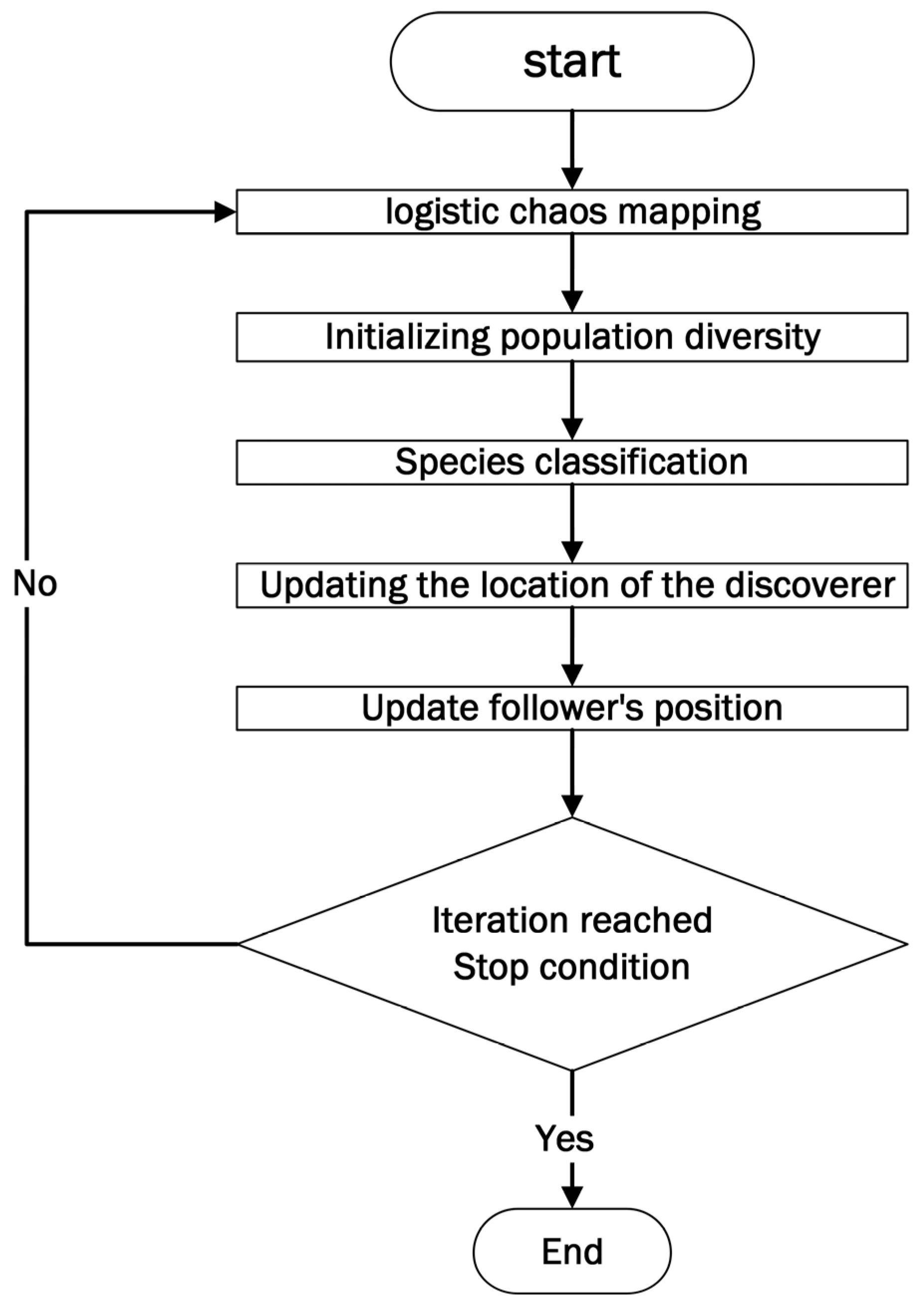
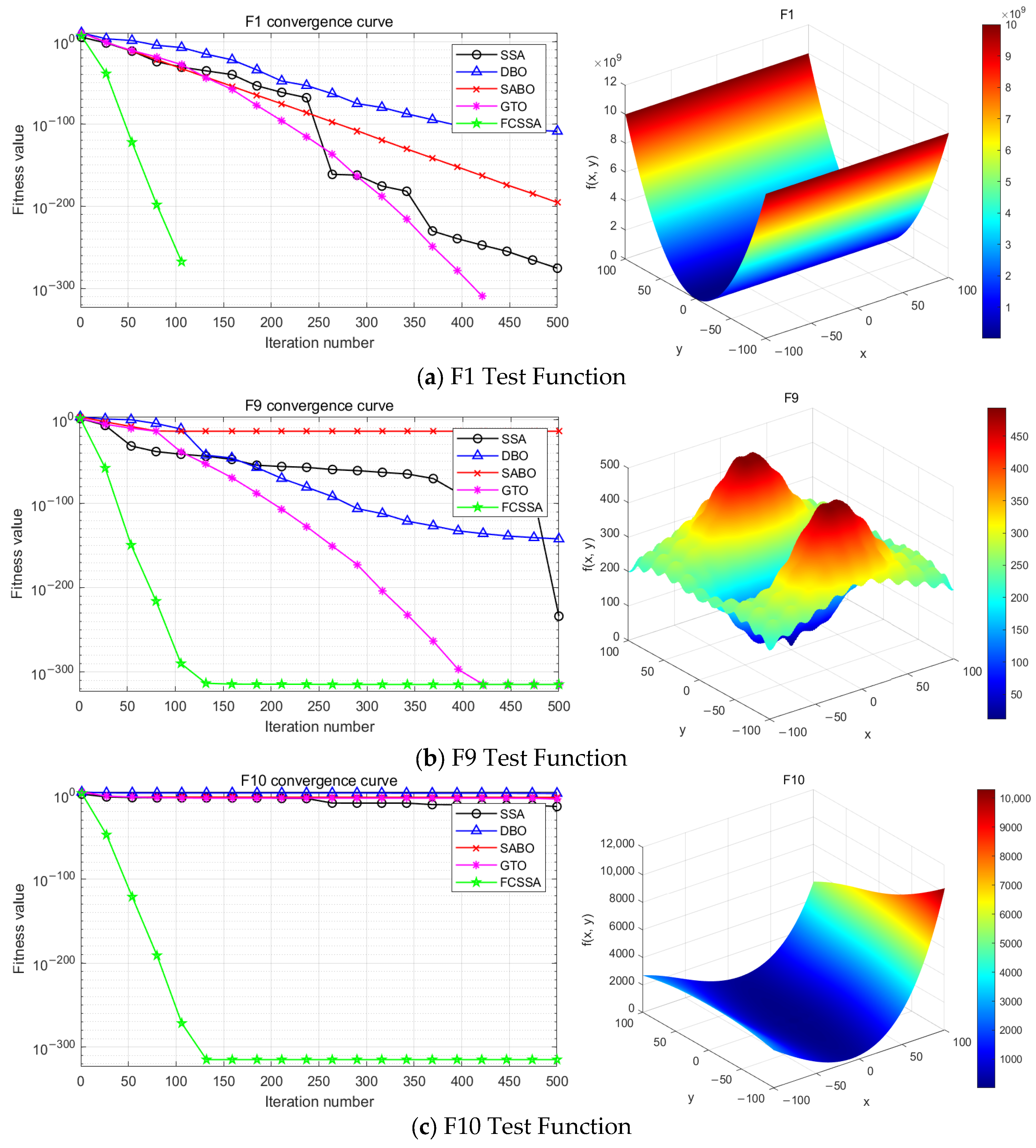

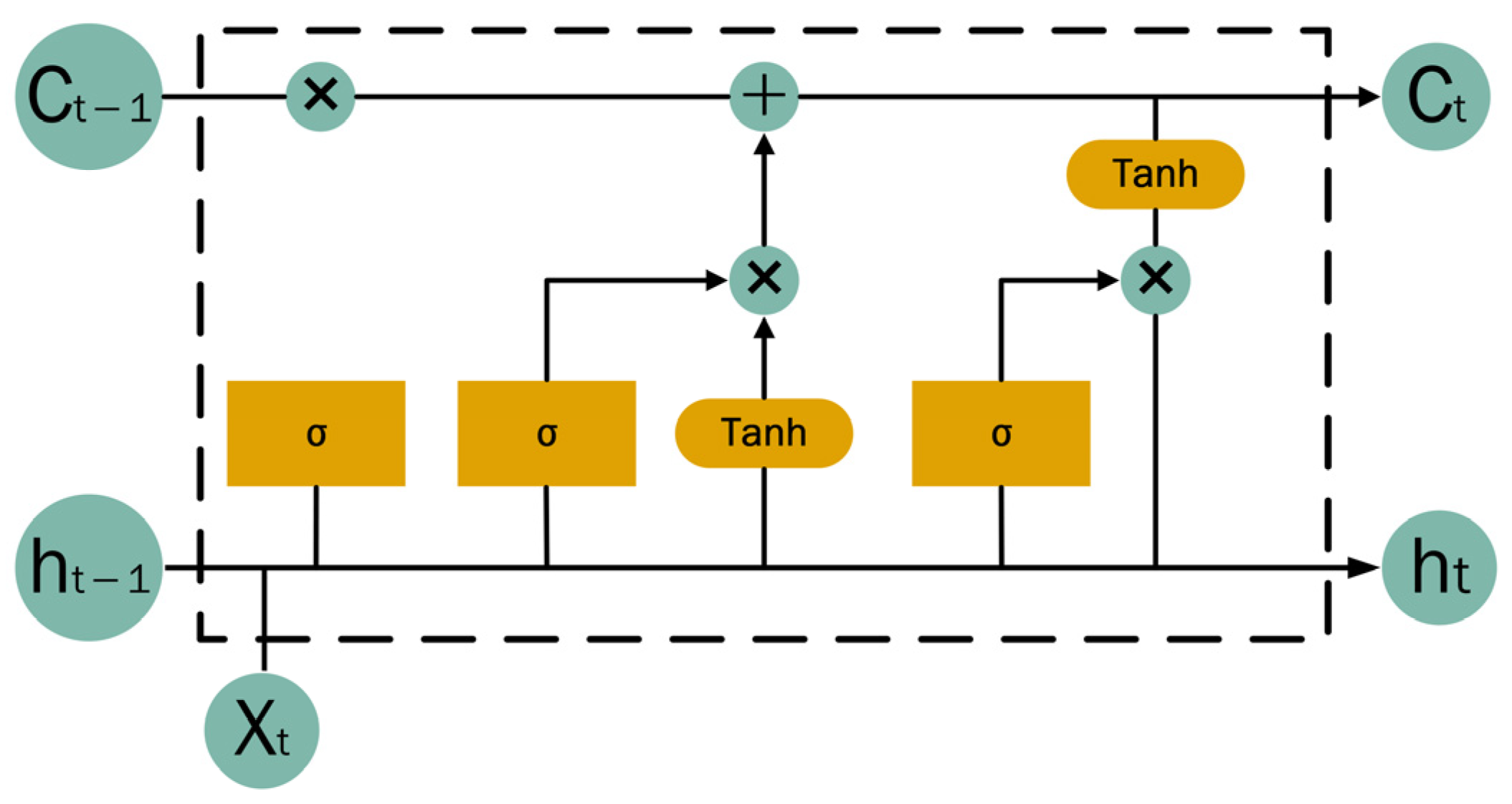
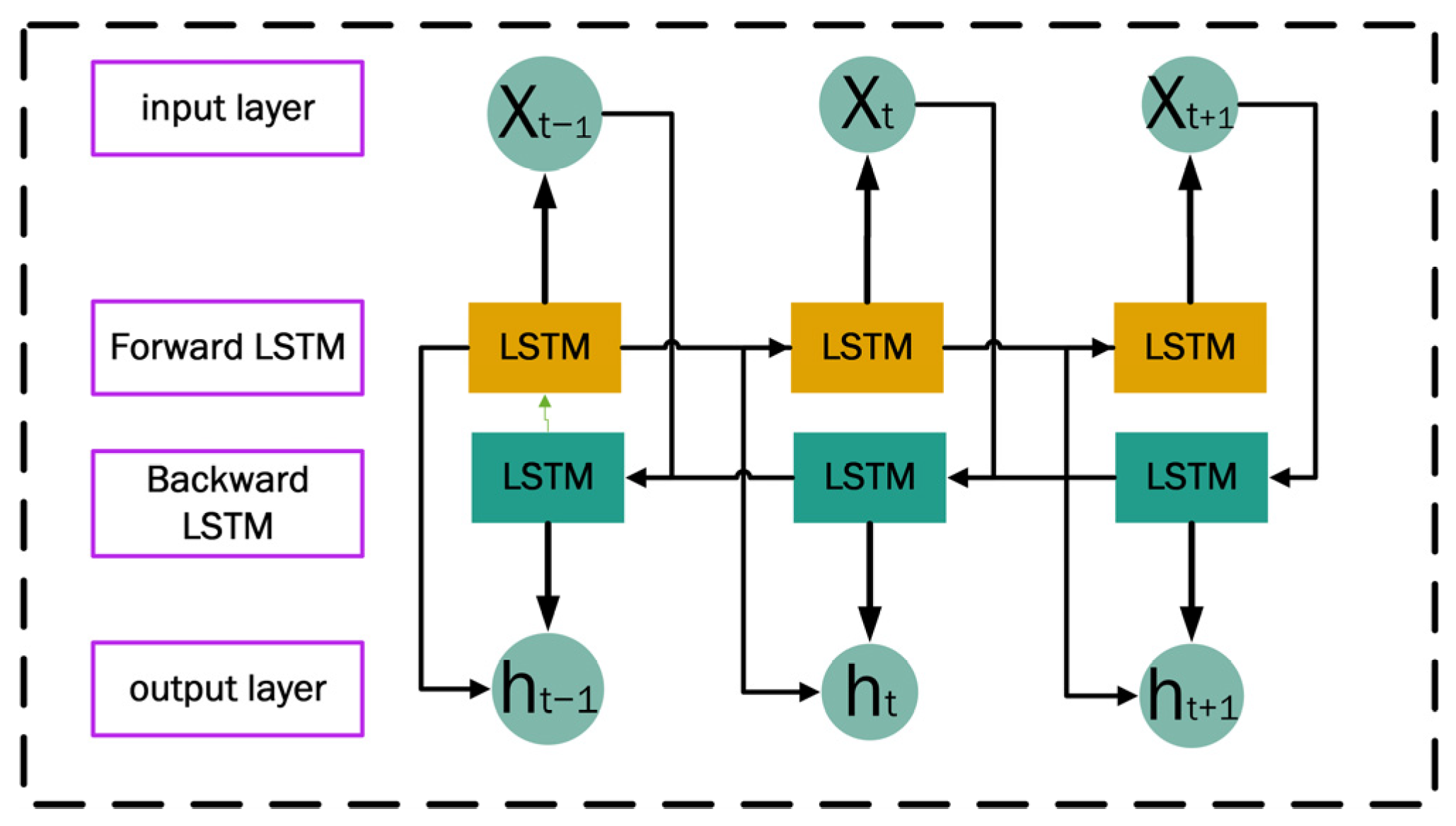

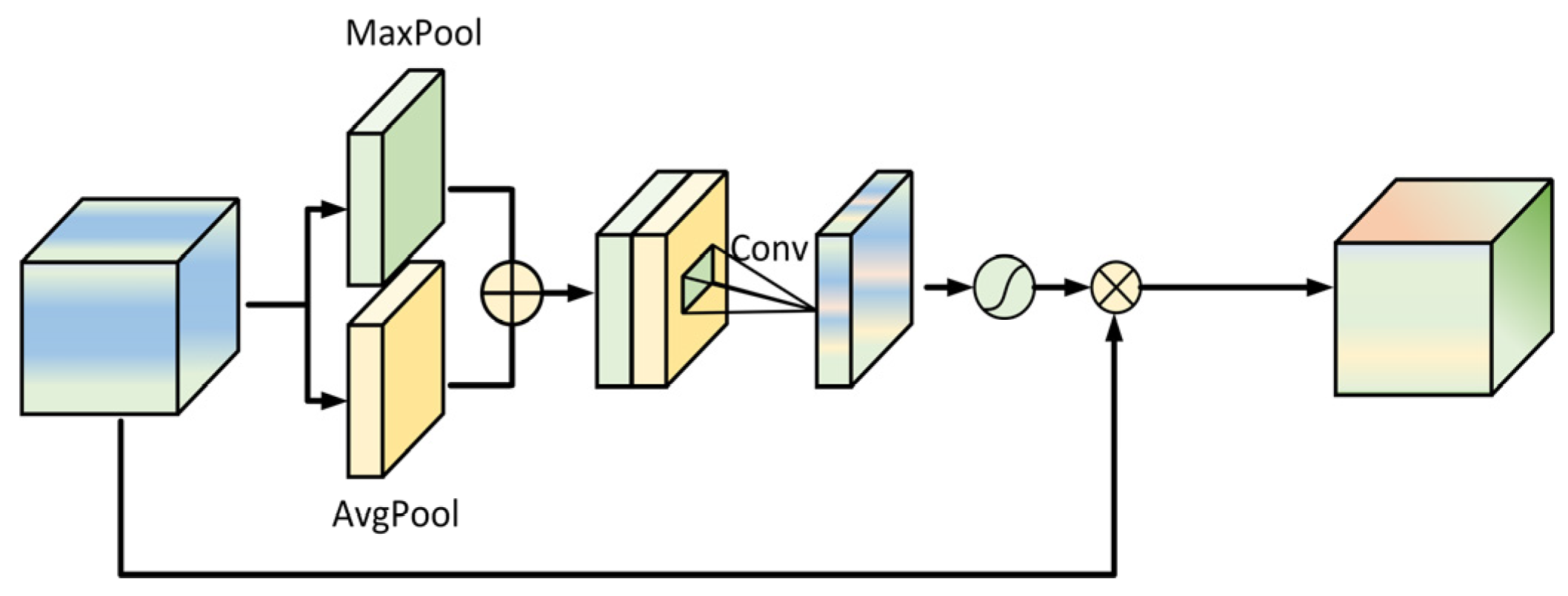
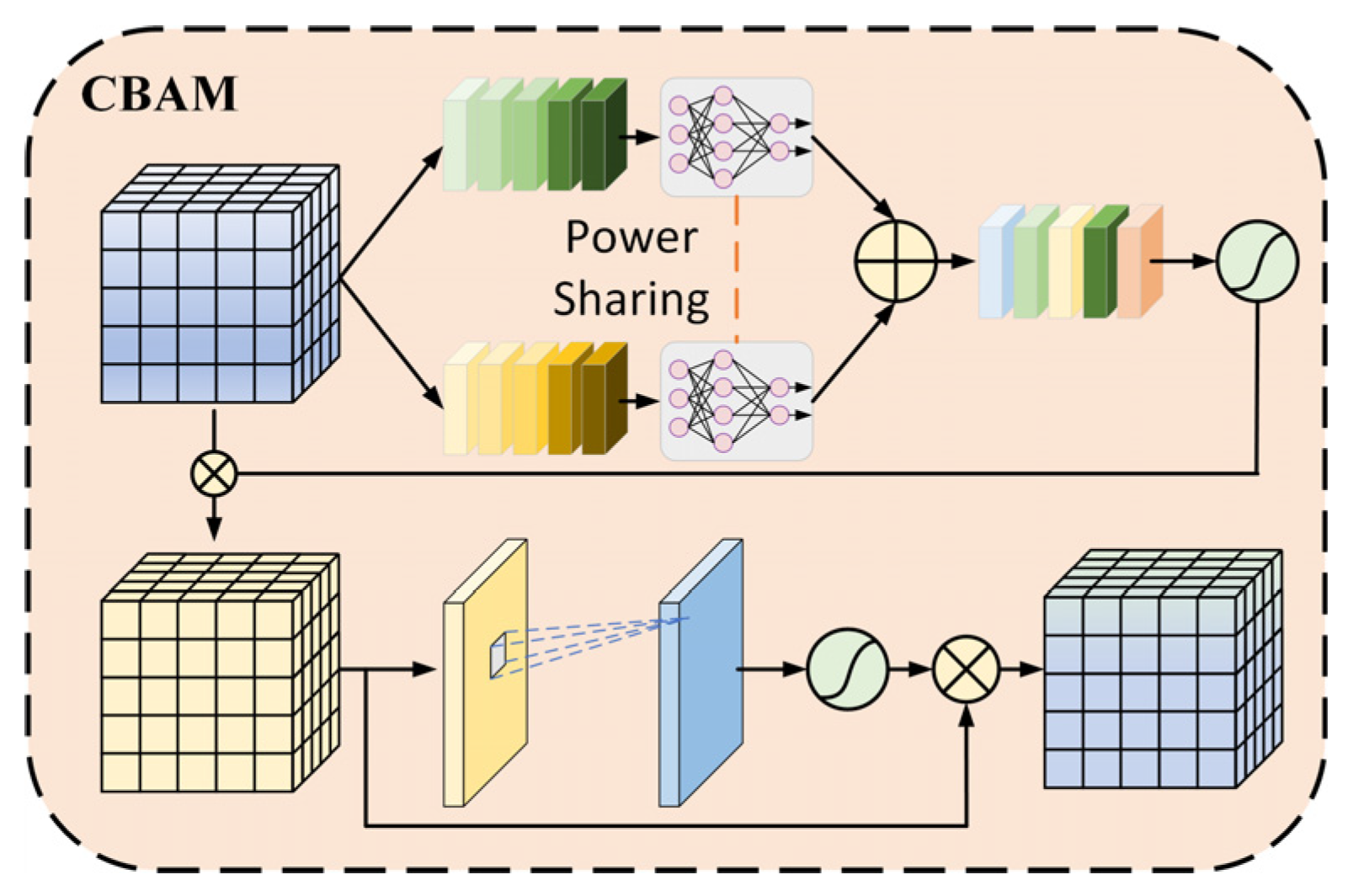
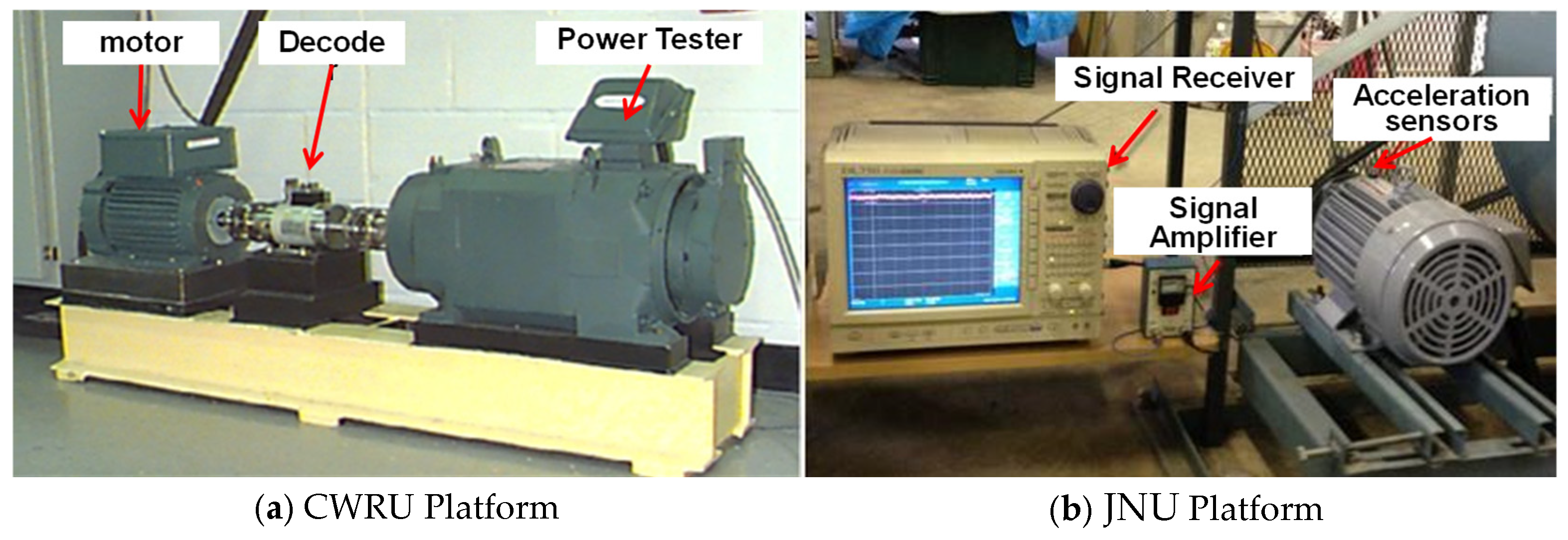
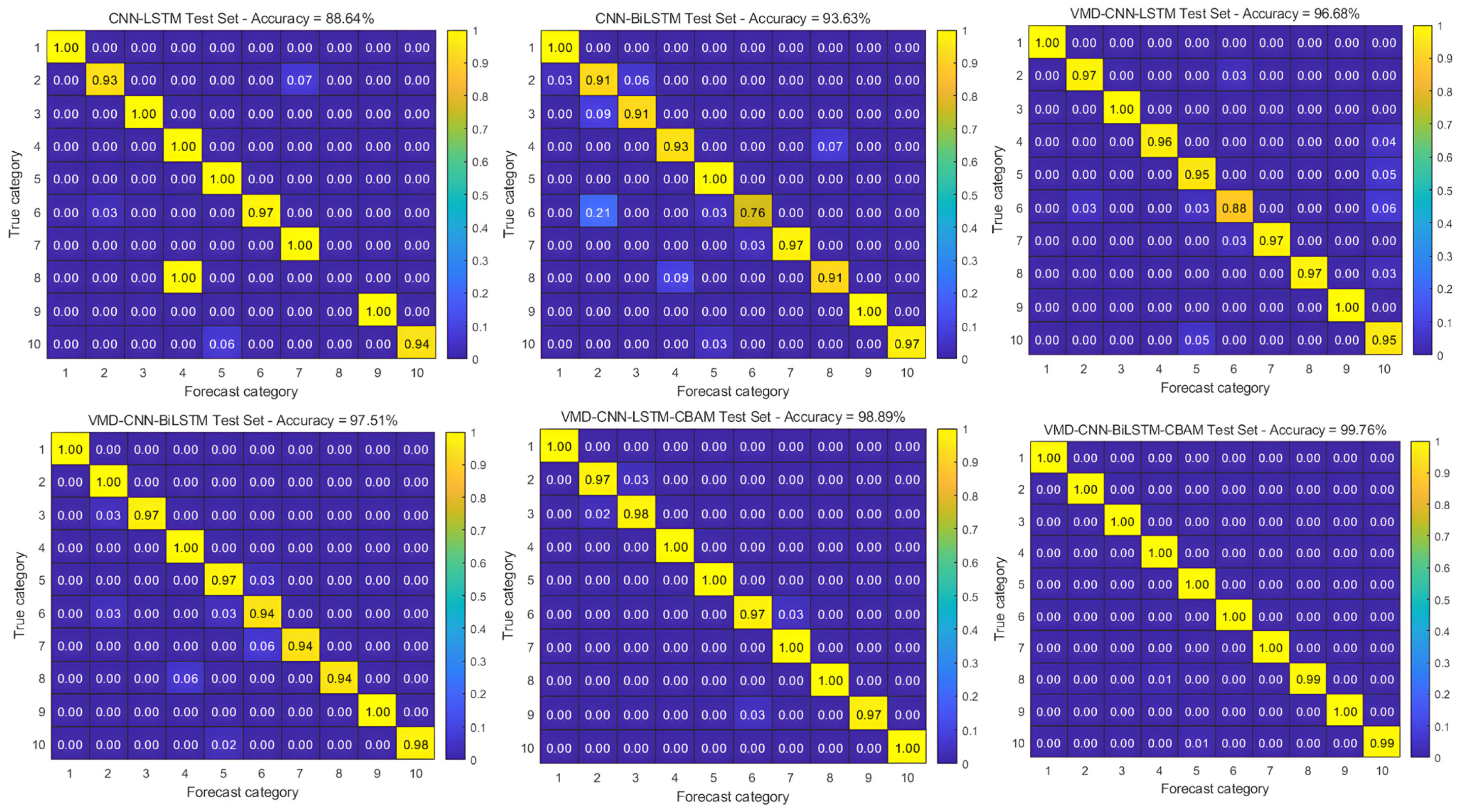




| Fault Type | Failure Size (Inches) | Sample Training Set | Sample Test Set | Label |
|---|---|---|---|---|
| normal operation | 0 | 350 | 150 | 0 |
| inner race faults | 0.007 | 350 | 150 | 1 |
| 0.014 | 350 | 150 | 2 | |
| 0.021 | 350 | 150 | 3 | |
| outer race faults | 0.007 | 350 | 150 | 4 |
| 0.014 | 350 | 150 | 5 | |
| 0.021 | 350 | 150 | 6 | |
| Rolling element faults | 0.007 | 350 | 150 | 7 |
| 0.014 | 350 | 150 | 8 | |
| 0.021 | 350 | 150 | 9 |
| Fault Type | Speed (r/min) | Sample Training Set | Sample Test Set | Label |
|---|---|---|---|---|
| Normal operation | 1000 | 350 | 150 | 0 |
| Inner race defects | 1000 | 350 | 150 | 1 |
| Outer race defects | 1000 | 350 | 150 | 2 |
| Rolling element faults | 1000 | 350 | 150 | 3 |
| Diagnostic Models | Accuracy | Time (s) | F1-Score |
|---|---|---|---|
| CNN-LSTM | 88.64% | 76 | 0.890 |
| CNN-BILSTM | 93.63% | 87 | 0.937 |
| VMD-CNN-LSTM | 96.68% | 31 | 0.967 |
| VMD-CNN-BILSTM | 97.51% | 34 | 0.976 |
| VMD-CNN-LSTM-CBAM | 98.89% | 37 | 0.987 |
| VMD-CNN-BILSTM-CBAM | 99.76% | 40 | 0.996 |
| Diagnostic Models | Accuracy | Time (s) | F1-Score |
|---|---|---|---|
| CNN-LSTM | 86.67% | 56 | 0.868 |
| CNN-BILSTM | 90.00% | 62 | 0.906 |
| VMD-CNN-LSTM | 95.86% | 12 | 0.959 |
| VMD-CNN-BILSTM | 96.55% | 14 | 0.966 |
| VMD-CNN-LSTM-CBAM | 97.24% | 30 | 0.974 |
| VMD-CNN-BILSTM-CBAM | 99.40% | 34 | 0.995 |
| Fault Type | Speed (r/min) | Sample Training Set | Sample Test Set | Label |
|---|---|---|---|---|
| Normalcy | 1200 | 350 | 150 | 0 |
| Inner ring failure | 1200 | 350 | 150 | 1 |
| Outer ring failure | 1200 | 350 | 150 | 2 |
| Rolling body failure | 1200 | 350 | 150 | 3 |
| Diagnostic Models | Accuracy | Time (s) | F1-Score |
|---|---|---|---|
| CNN-LSTM | 89.17% | 58 | 0.892 |
| CNN-BILSTM | 91.67% | 64 | 0.918 |
| VMD-CNN-LSTM | 95.17% | 10 | 0.962 |
| VMD-CNN-BILSTM | 97.93% | 13 | 0.979 |
| VMD-CNN-LSTM-CBAM | 98.62% | 16 | 0.987 |
| VMD-CNN-BILSTM-CBAM | 99.70% | 19 | 0.998 |
Disclaimer/Publisher’s Note: The statements, opinions and data contained in all publications are solely those of the individual author(s) and contributor(s) and not of MDPI and/or the editor(s). MDPI and/or the editor(s) disclaim responsibility for any injury to people or property resulting from any ideas, methods, instructions or products referred to in the content. |
© 2025 by the authors. Licensee MDPI, Basel, Switzerland. This article is an open access article distributed under the terms and conditions of the Creative Commons Attribution (CC BY) license (https://creativecommons.org/licenses/by/4.0/).
Share and Cite
Yuan, B.; Lei, L.; Chen, S. Optimized Variational Mode Decomposition and Convolutional Block Attention Module-Enhanced Hybrid Network for Bearing Fault Diagnosis. Machines 2025, 13, 320. https://doi.org/10.3390/machines13040320
Yuan B, Lei L, Chen S. Optimized Variational Mode Decomposition and Convolutional Block Attention Module-Enhanced Hybrid Network for Bearing Fault Diagnosis. Machines. 2025; 13(4):320. https://doi.org/10.3390/machines13040320
Chicago/Turabian StyleYuan, Bin, Lei Lei, and Suifan Chen. 2025. "Optimized Variational Mode Decomposition and Convolutional Block Attention Module-Enhanced Hybrid Network for Bearing Fault Diagnosis" Machines 13, no. 4: 320. https://doi.org/10.3390/machines13040320
APA StyleYuan, B., Lei, L., & Chen, S. (2025). Optimized Variational Mode Decomposition and Convolutional Block Attention Module-Enhanced Hybrid Network for Bearing Fault Diagnosis. Machines, 13(4), 320. https://doi.org/10.3390/machines13040320







